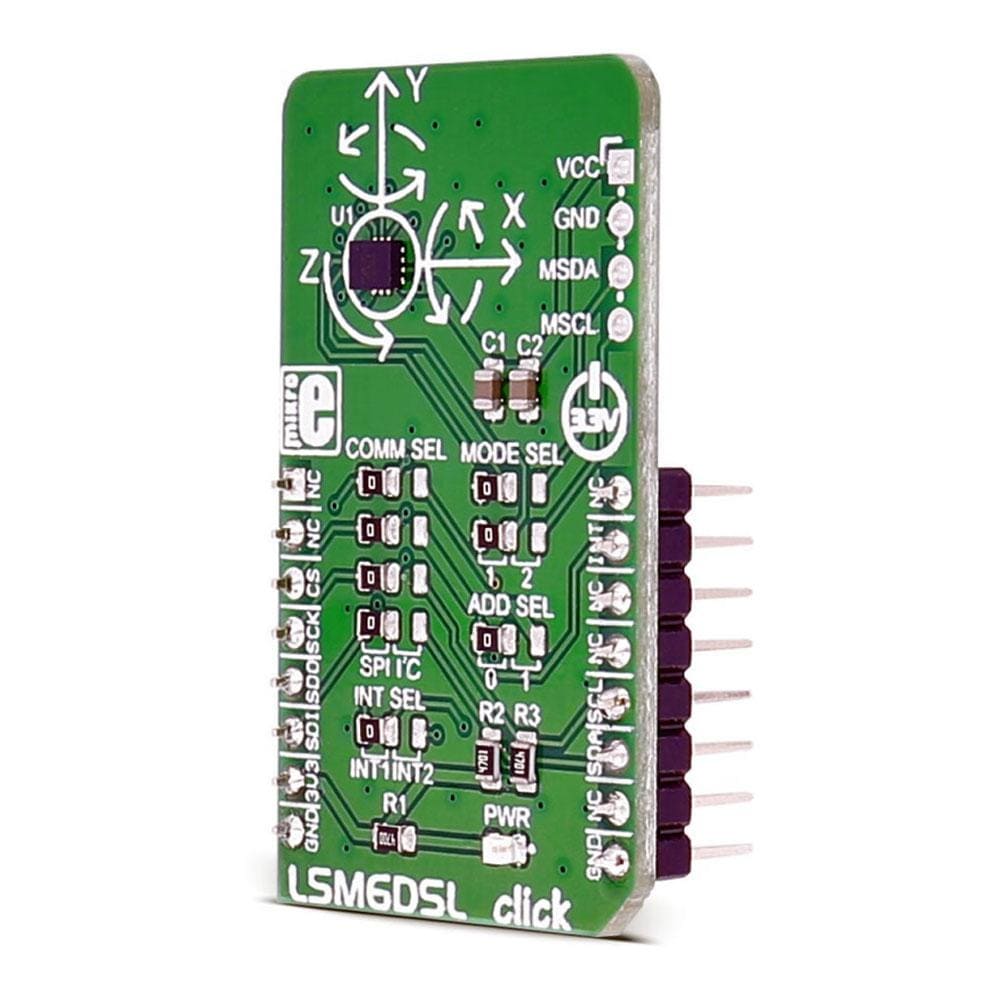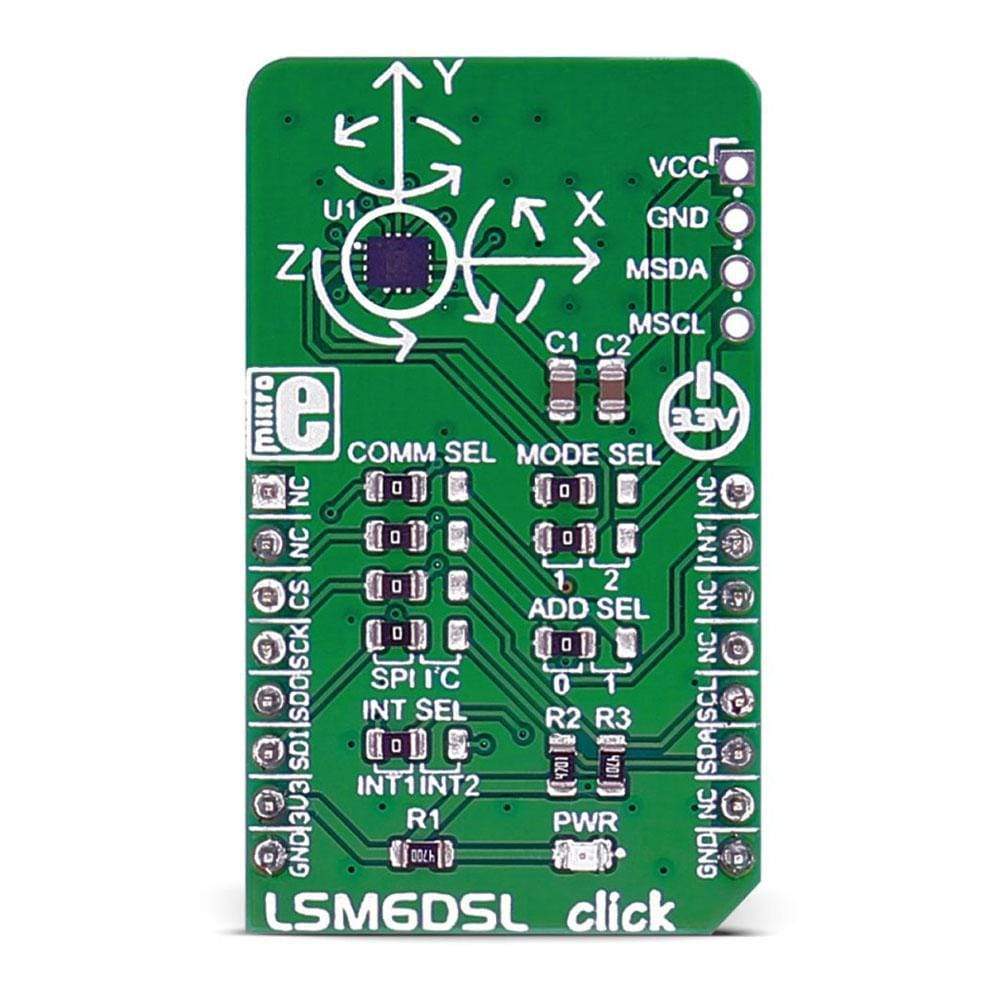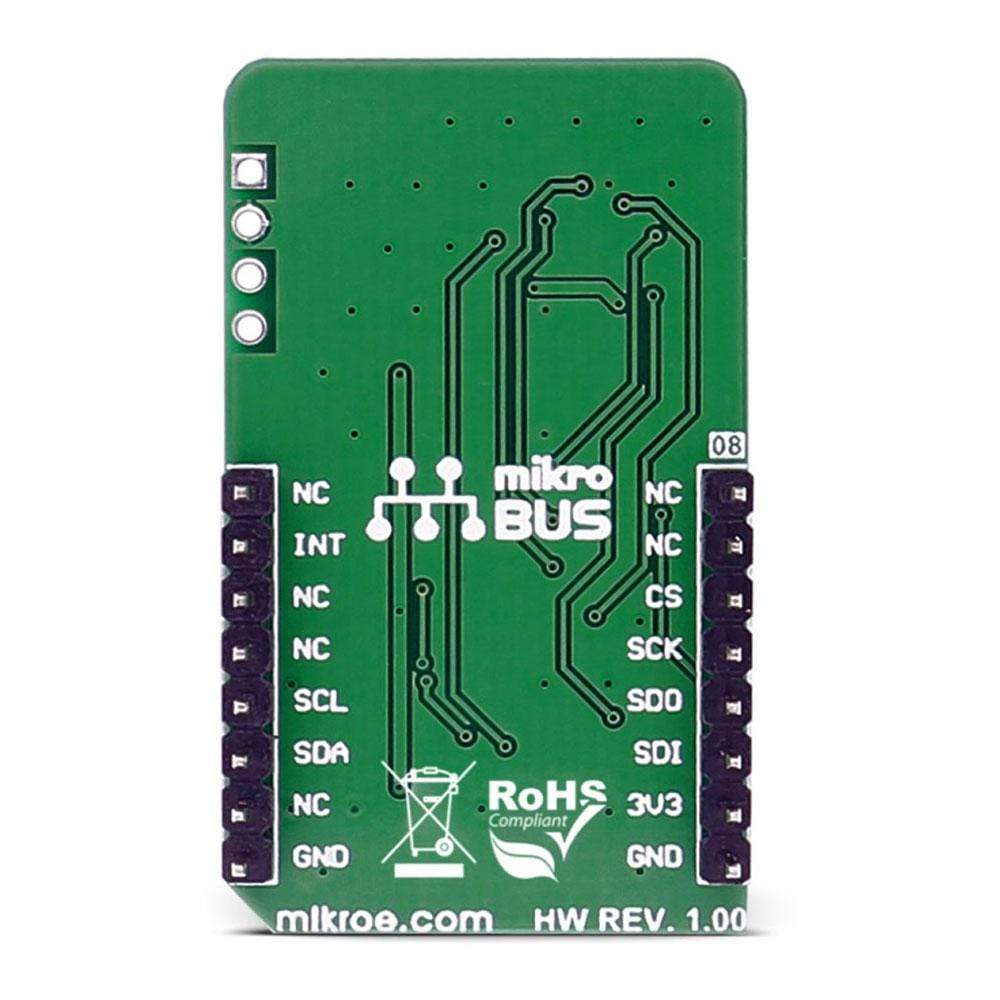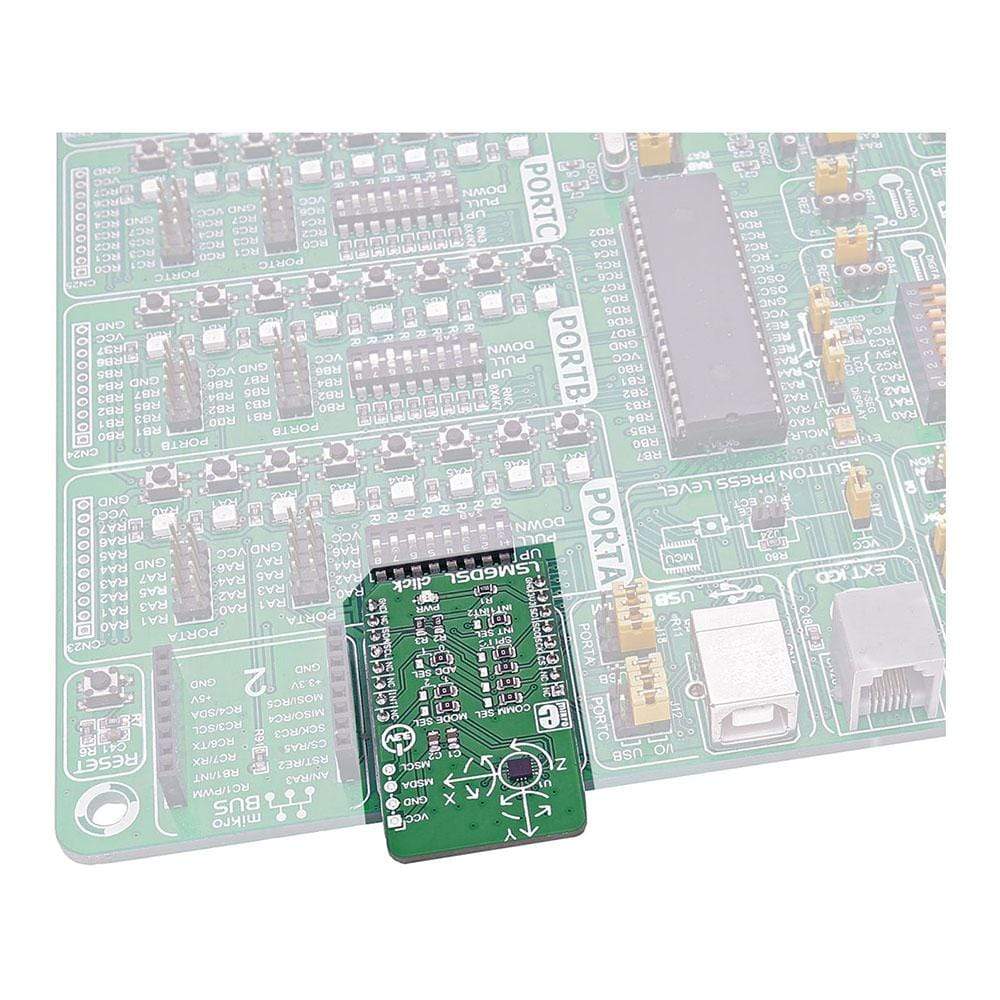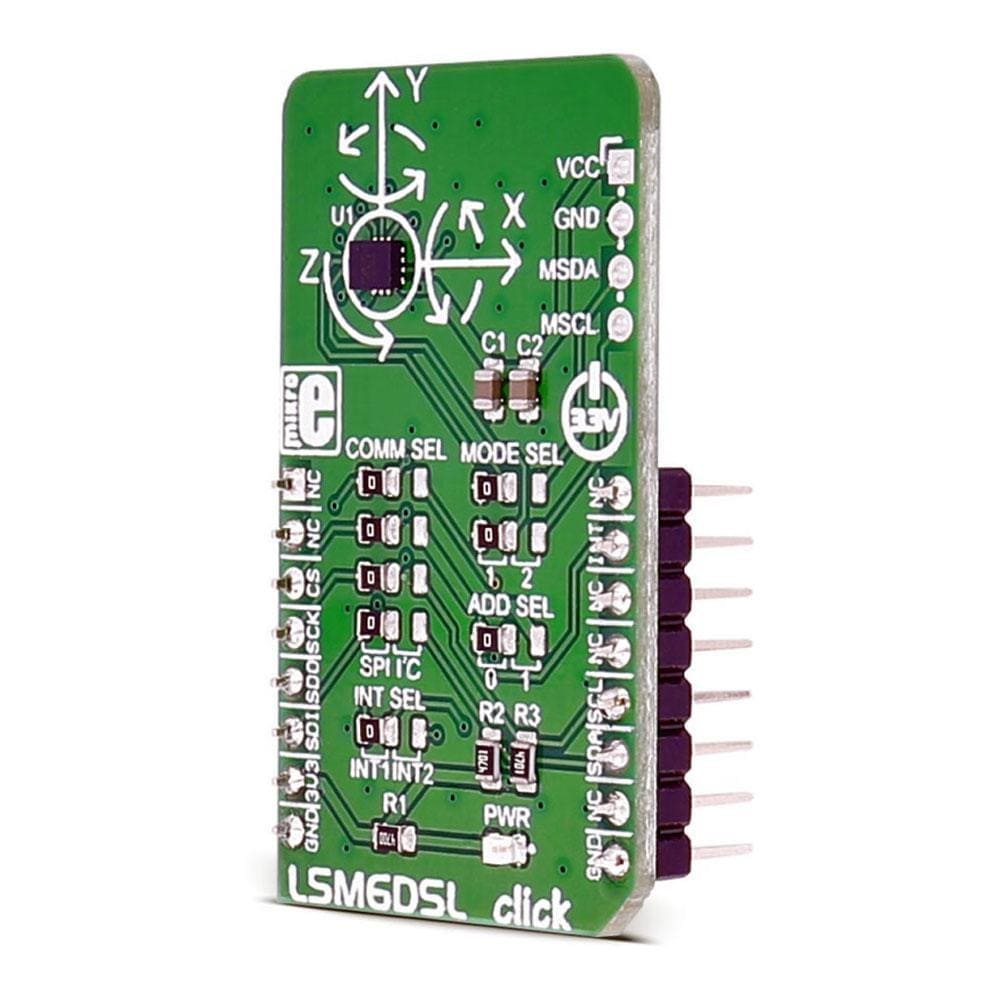
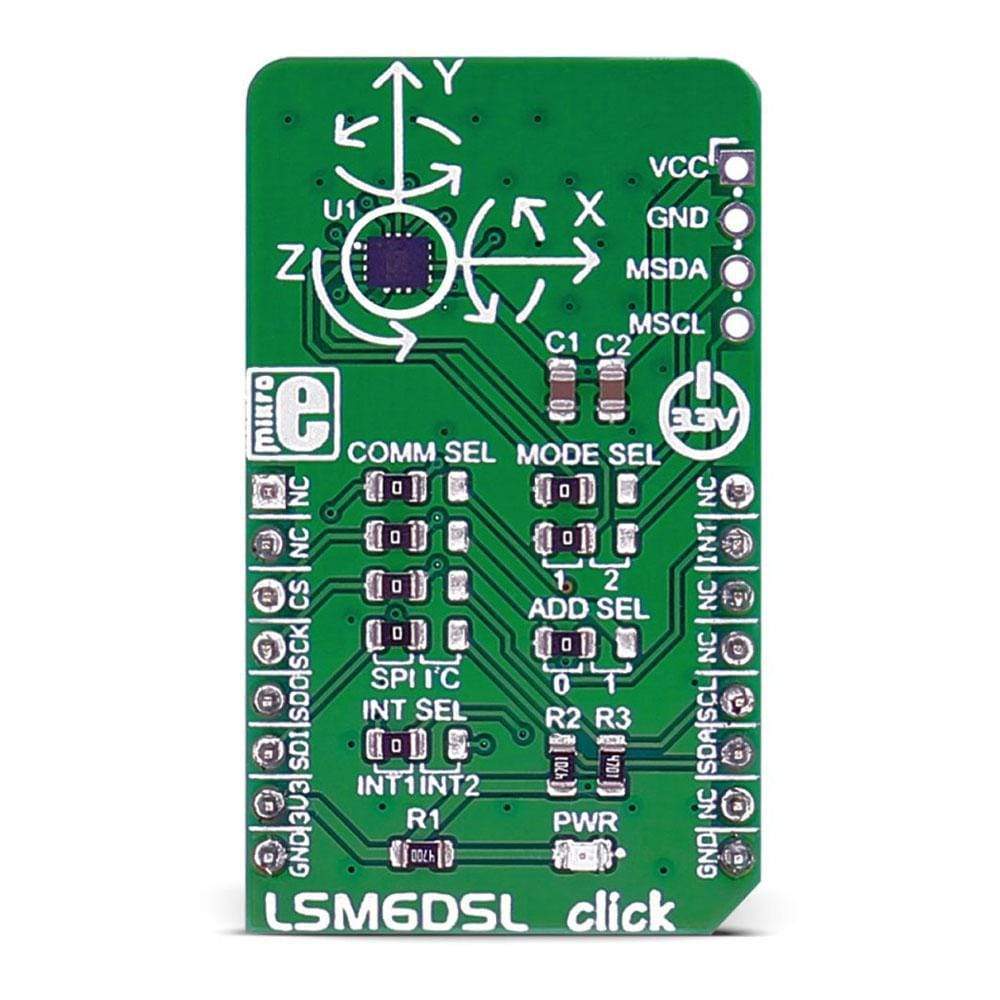
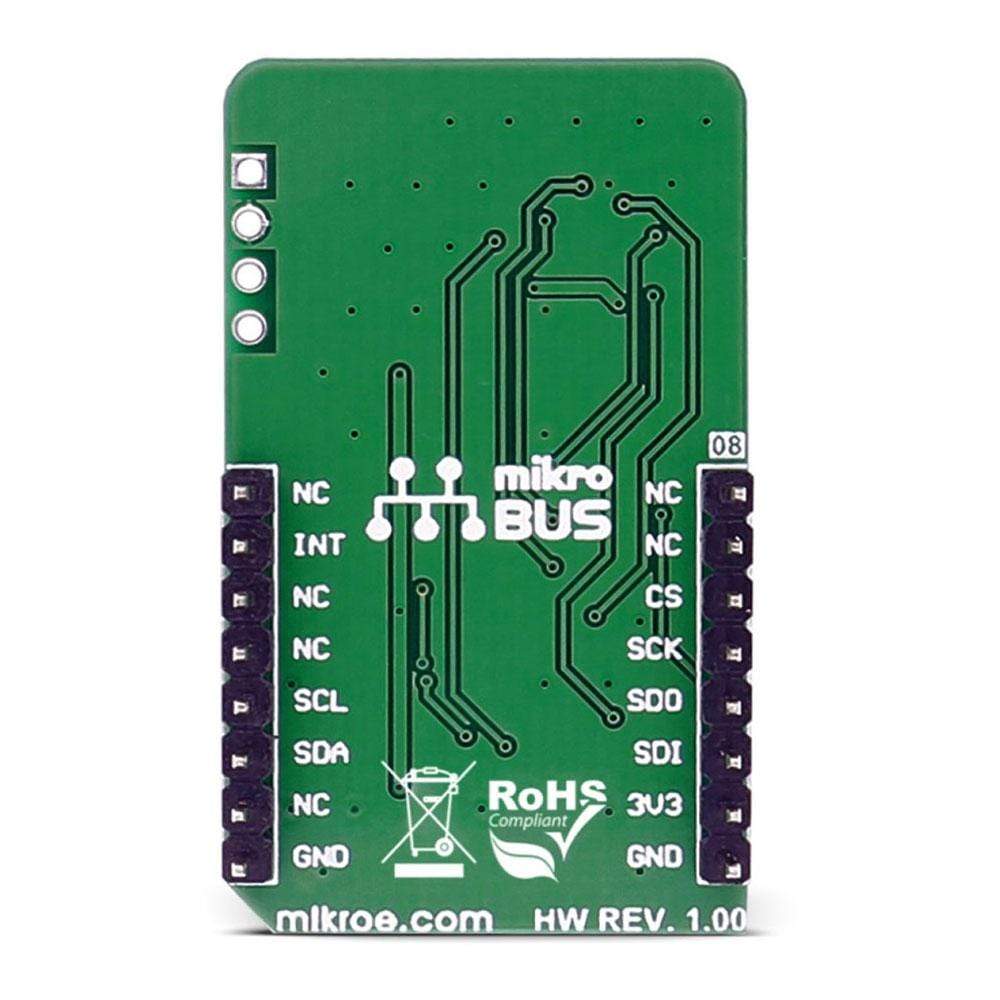
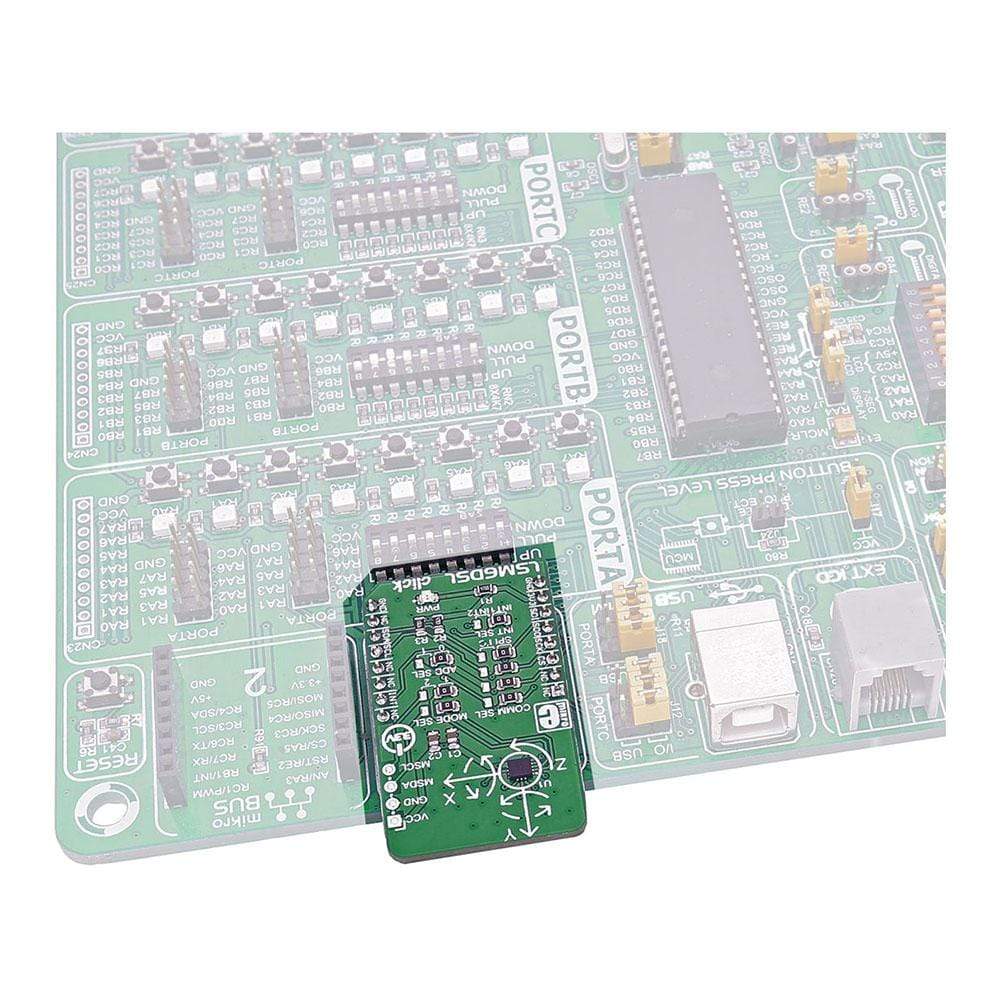
Overview
The LSM6DSL Click Board™ measures linear and angular velocity with six degrees of freedom. It carries the LSM6DSL high-performance 3-axis digital accelerometer and 3-axis digital gyroscope. The Click Board™ is designed to run on a 3.3V power supply.
The LSM6DSL Click Board™ communicates with the target microcontroller over SPI or I2C interface, with additional functionality provided by the INT pin on the MikroBUS line.
Downloads
Le Click Board™ LSM6DSL mesure la vitesse linéaire et angulaire avec six degrés de liberté. Il est équipé de l'accéléromètre numérique 3 axes hautes performances LSM6DSL et du gyroscope numérique 3 axes. Le Click Board™ est conçu pour fonctionner sur une alimentation 3,3 V.
La carte Click Board™ LSM6DSL communique avec le microcontrôleur cible via l'interface SPI ou I2C, avec des fonctionnalités supplémentaires fournies par la broche INT sur la ligne MikroBUS.
| General Information | |
|---|---|
Part Number (SKU) |
MIKROE-2731
|
Manufacturer |
|
| Physical and Mechanical | |
Weight |
0.018 kg
|
| Other | |
Country of Origin |
|
HS Code Customs Tariff code
|
|
EAN |
8606018711239
|
Warranty |
|
Frequently Asked Questions
Have a Question?
Be the first to ask a question about this.

